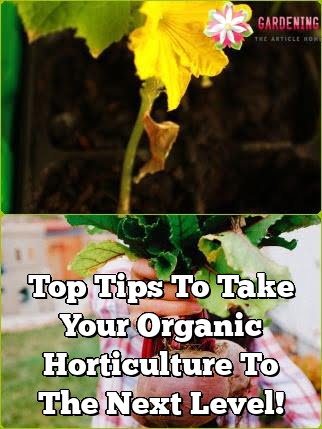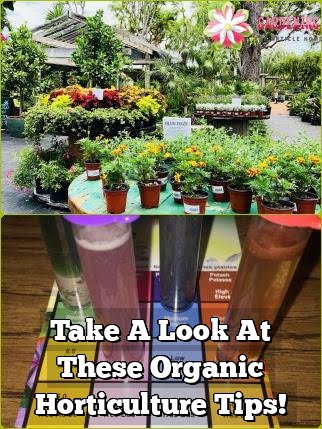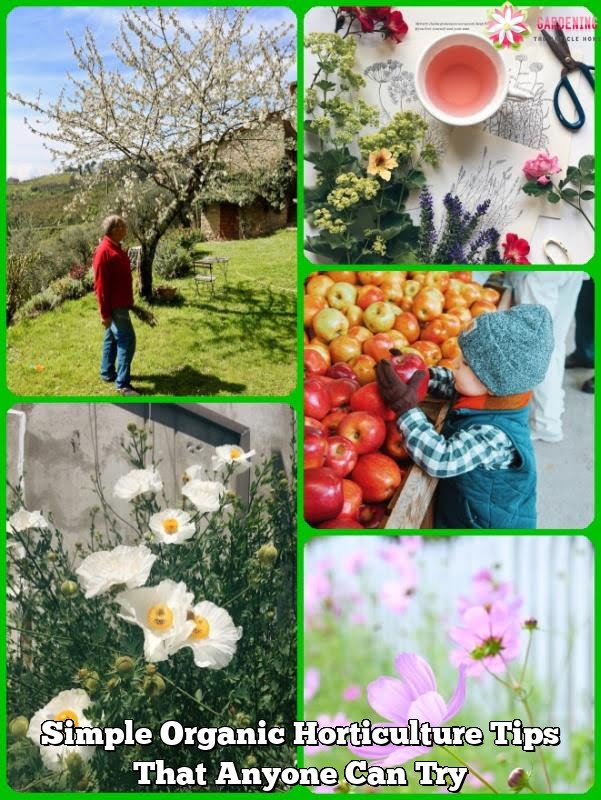Horticulture lets you grow veggies and fresh vegetables just outside your door. There is nothing that tastes better than fresh picked tomatoes on a salad or the entire salad right from your own garden. The following paragraphs contain a handful of helpful hints that will enable you to maximize your horticulture experience the best.
Plant some perennials in your garden that are resistant to slug and snail infestations. Slugs and snails are voracious eaters that can kill a plant very quickly. These garden vermin prefer plants with tender, tender, particularly seedlings and young plants. Some perennials are not preferred meals for snails and slugs, particularly perennials that have hairy, leave a bad taste in slugs’ mouths or are difficult to chew through because their leaves aren’t tender. Some of examples of these are achillea, campanula, euphorbia, hellaborus, and heuchera.
Brighten up your flower beds with biennials and annuals. You can fill any spaces between shrubs or perennials. Some excellent choices include rudbeckia, marigold, cosmos, rudbekcia, or sunflowers.
Plants need a good supply of CO2 for proper maximum growth. A higher level of CO2 provides an optimum environment for growth.The best way to get a high level of carbon dioxide (CO2) is to use a greenhouse.
Plant bulbs if you want flowers through spring and summer flowers. Different types of bulbs bloom at different times, so choosing appropriately, you may have blooms early spring to later summer.
When fall has arrived, it is time to plant your fall edibles.A pumpkin can be used as a festive container instead of clay pots. Once you’ve cut its top and scooped the insides out, spray the inside and edges with Wilt-Pruf to keep the pumpkin from rotting.
Protect your deciduous shrubs. Tie together the tops, and drape a sheet or blanket over the top of the wigwam. This method is superior to covering plants in plastic, because air can freely circulate, which will help to prevent rotting.
Fertilizing your garden soil. Manure is great in enabling plants to grow, but you must use only commercially created products to reduce the chance of contracting pathogens.
Chamomile tea can be an effective treatment against fungus.
Make sure you work in your garden. Don’t waste thirty minutes looking all over for missing tools. Prepare all the tools you need before you go out to work on your garden, and then put them away neatly when finished. If you use lots of tools, purchase a tool belt or heavy duty pants with plenty of pockets.
Have some plastic bags on hand that you can put over your muddy horticulture shoes.
Pine is a great source for mulch. Cover the surface of the ground with a two-inch layer of the pine needles; as the needles break down, as they will decompose and disperse their acid throughout the soil.
Plant Materials
Your compost pile should contain green plant materials and dried ones in equal amounts. Green plant material can include old flowers, veggie and fruit waste, grass clippings, grass clippings, and leaves. Dried plant materials are things like shredded newspaper, shredded paper, shredded paper, cardboard, and dried and cut-up woody material. Avoid ashes, charcoal, charcoal and diseased plants in your compost.
Fill the jar with beer to an inch below the top. The beer will bait the slugs into the jar and they will become trapped.
If you sell or use organically grown produce in a commercial setting, you need to secure organic garden certification. This should boost your sales while proving to your customers that they are getting the best produce out there.
Organic gardening may sometimes require more effort than resorting to chemicals, but the results are worth it. Chemicals are extremely efficient, but a chemical free organic garden will always produce the best results.
Adjust your watering to the season and current climate.For example, if you live in a warm, avoid getting any water on the leaves because this will cause leaf fungus.
If you want to consistently grow healthy tomatoes, make sure you plant a second batch roughly three weeks after the first ones were done. This way you will not inundated with a huge tomato harvest all of your crops at one time.
The ideal way to water your organic garden is with a soaker hoses.
Be specific about what you would like to grow when it comes to your organic garden. Different varieties of a particular flower or vegetable require different kinds of environments. For example, a number of kinds of roses are available, whilst others will wilt and die. Make sure that you select the varieties that will adapt well to your garden.
Using plenty of mulch is a wonderful method to conserve water in your garden at home. Mulch can be bought at stores, created from compost or gathered from wood chippers.The important thing is to have an adequate supply of it.
Water is essential to maintaining a healthy garden. On a hot day, the soil will become more dry, and one needs to make sure that they do not forget to water their garden. Watering properly will help the garden look its best.
Some plants will thrive when you re-plant them, and others will react poorly if their roots are disturbed. To see if a plant needs a bigger pot, turn it upside down and tap the pot until the plant falls out. If the roots you see are minimal, your plan is just fine in the current pot, and doesn’t need to be transplanted.
A lot of trees, and provide your garden with beautiful shades of reds, oranges, then they will turn your garden into a array of bright colors. This is due to a decrease in chlorophyll production, and the colors that were masked previously by the green, now begin to show. Plants and trees that will produce great fall colors include maples, barberry, boston ivy, burning bush and maple.
As you have seen, it is easy to grow tasty vegetables and fruits in your own garden. Using your own produce in your favorite dishes will make you that much prouder of your meals. Utilize the advice from the above article in order to maximize your experience with gardening.

Welcome to my blog about home and family. This blog is a place where I will share my thoughts, ideas, and experiences related to these important topics. I am a stay-at-home mom with two young children. I hope you enjoy reading it! and may find some helpful tips and ideas that will make your home and family life even better!





